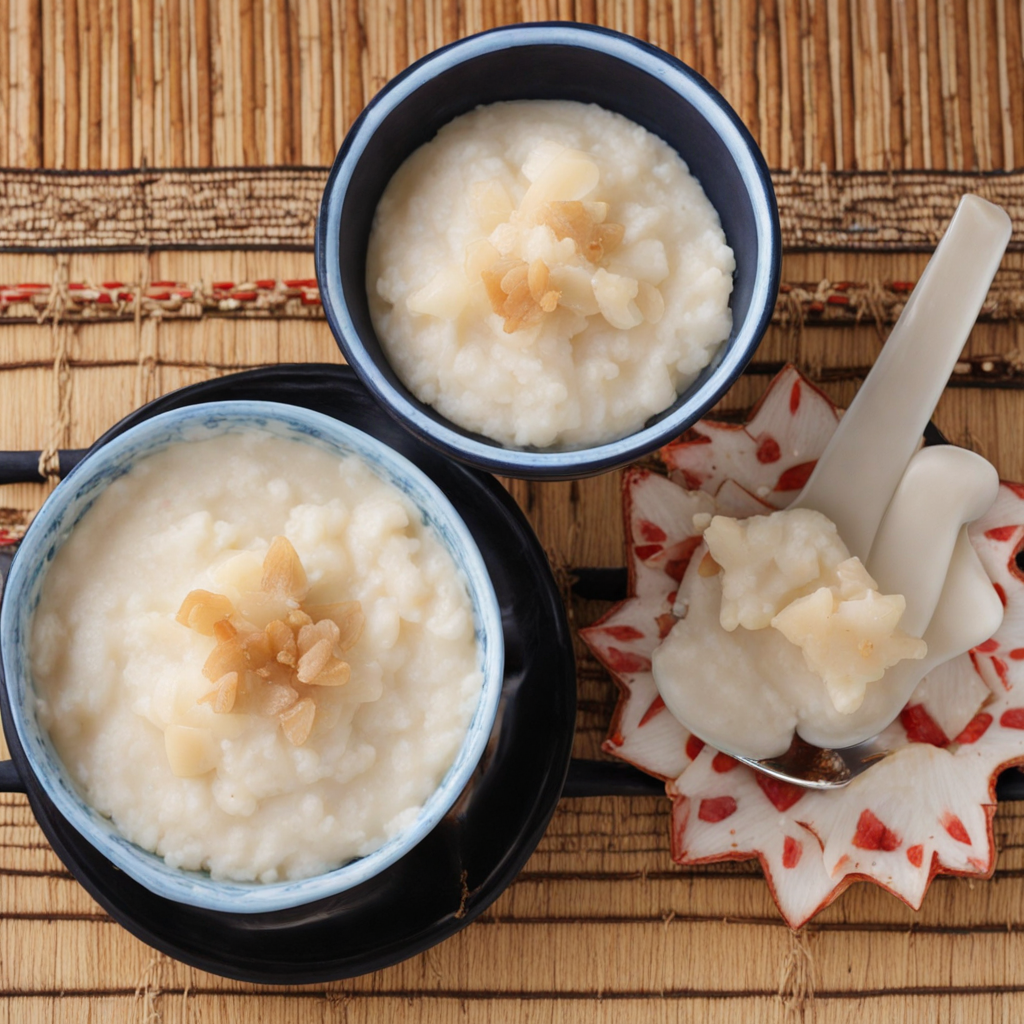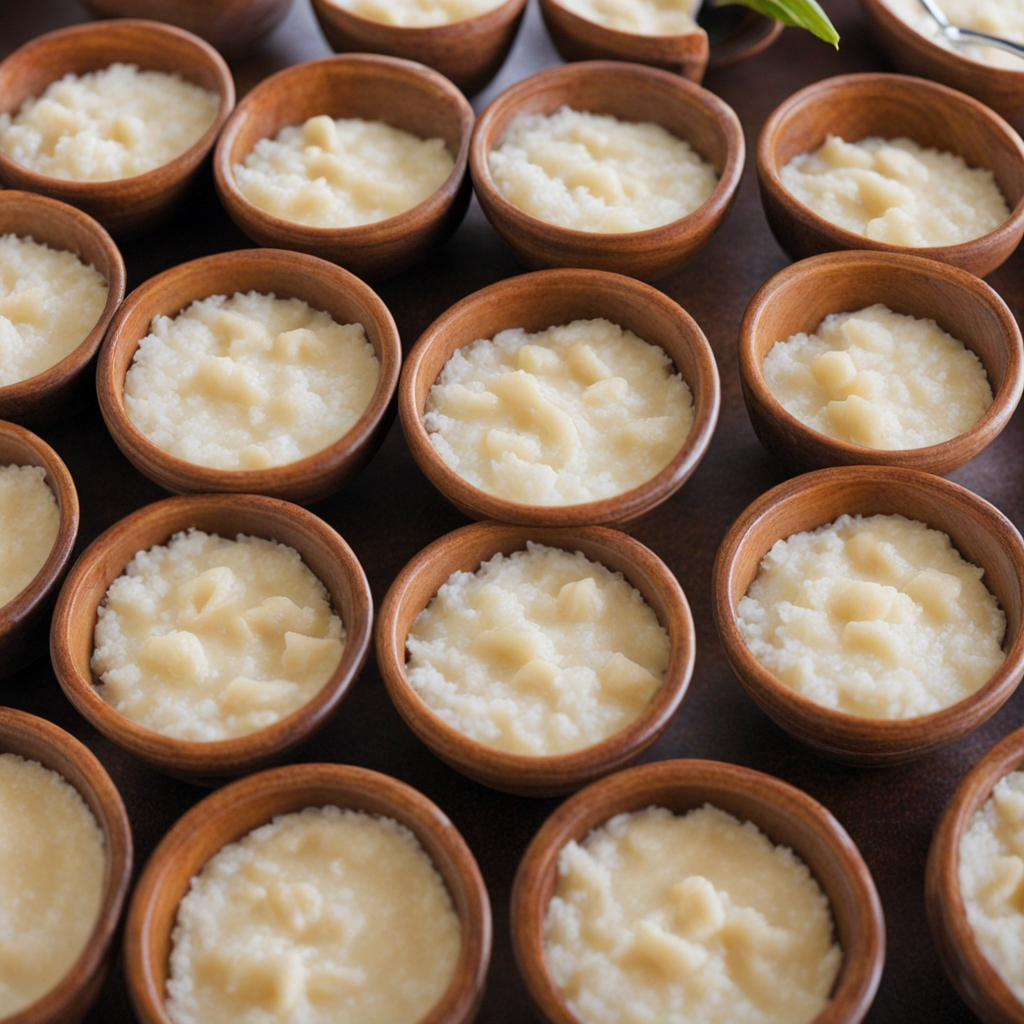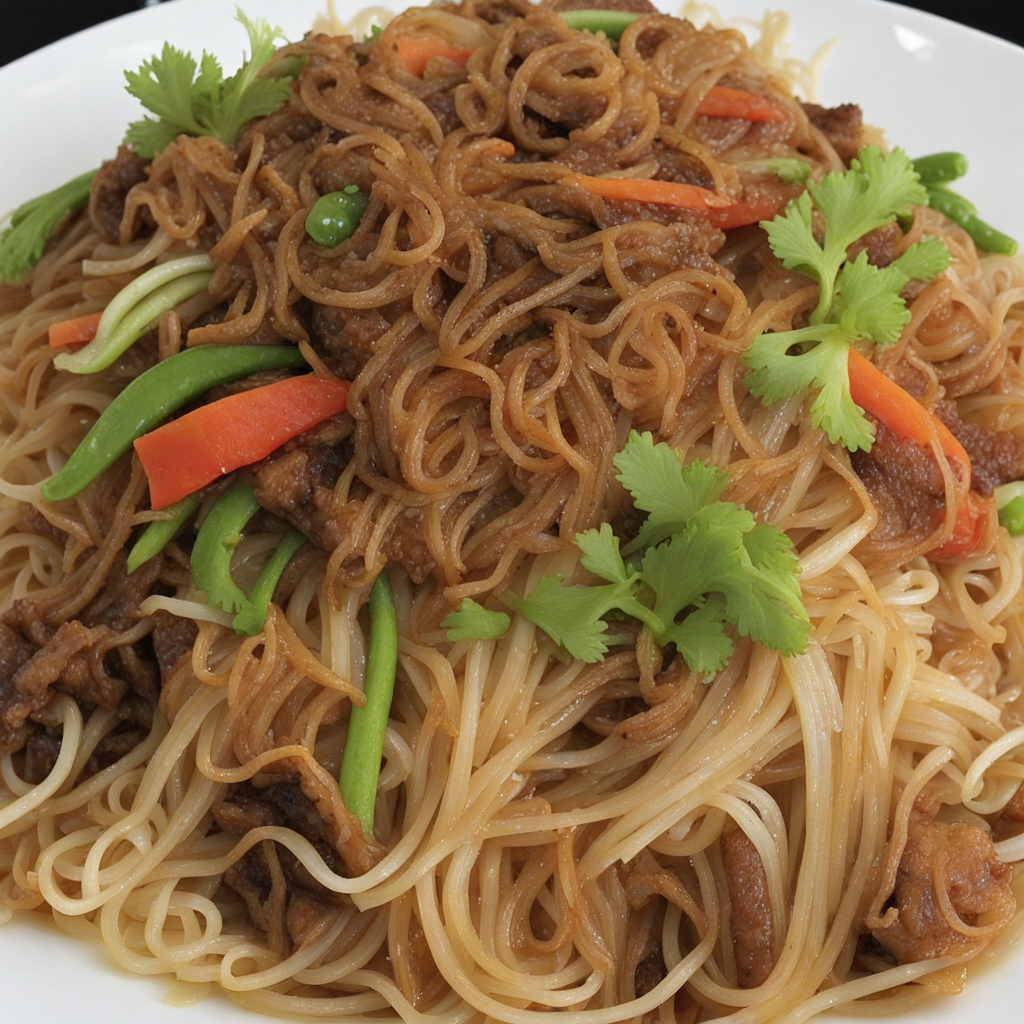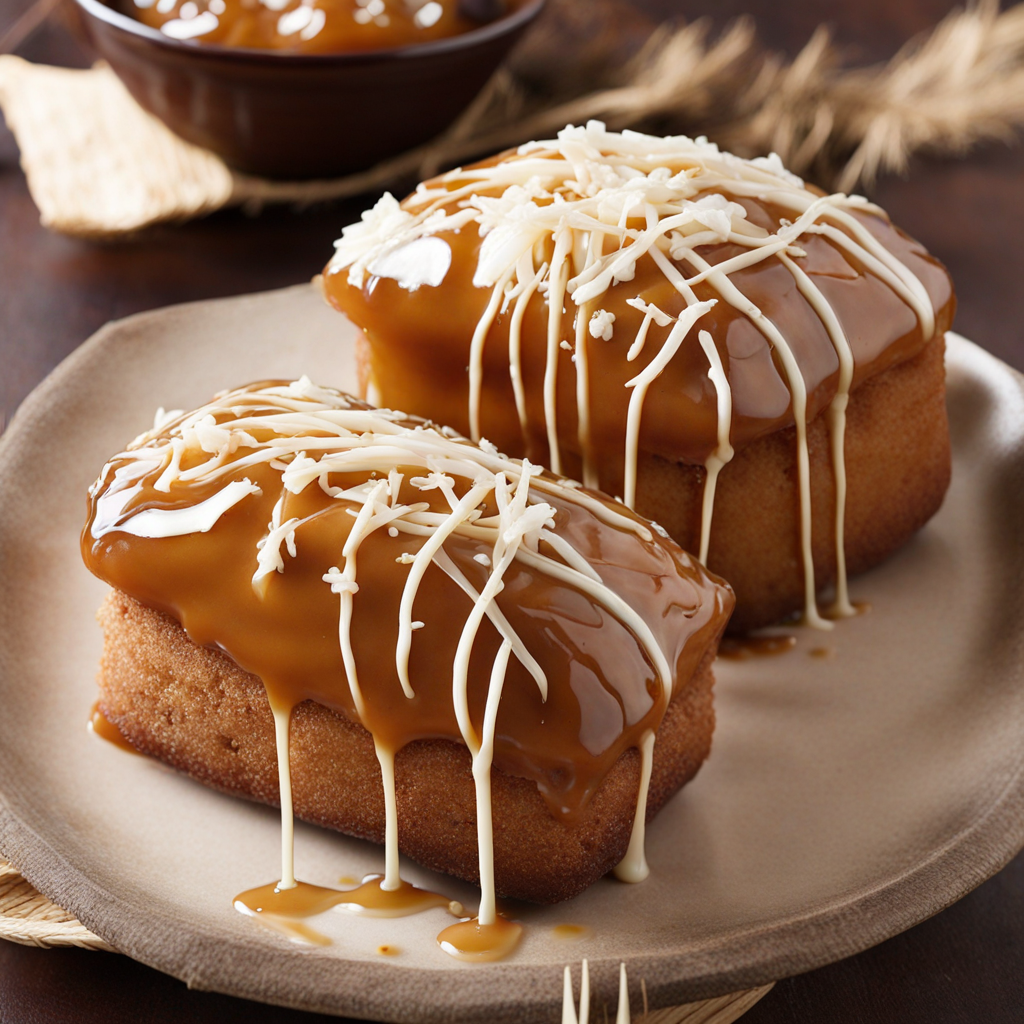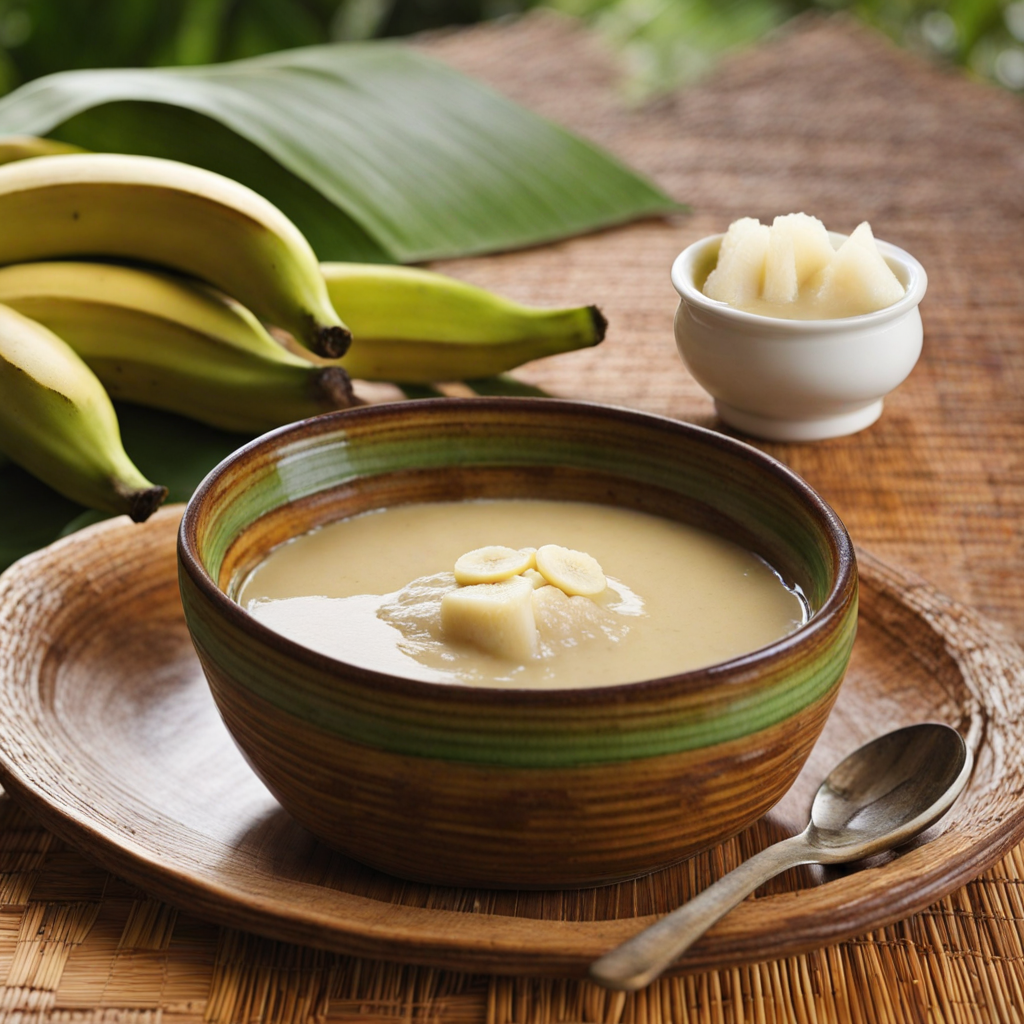Vaisalo
Vaisalo is a traditional dish from Samoa that encapsulates the vibrant flavors and culinary heritage of the islands. At its core, Vaisalo features tender pieces of fresh fish, typically marinated in a zesty blend of coconut cream, lime juice, and a medley of local herbs. The fish is often sourced from the bountiful waters surrounding Samoa, ensuring a freshness that is both exquisite and essential to the dish. The creamy coconut sauce adds a rich, velvety texture, while the citrus notes from the lime brighten the overall profile, creating a harmonious balance that dances on the palate. Accompanying the fish, Vaisalo is often served with a side of taro or green bananas, which serve as a perfect vehicle to soak up the luscious coconut sauce. The starchy sides provide a satisfying contrast to the flaky fish, while also complementing the dish's tropical essence. Additionally, the inclusion of fresh vegetables, such as tomatoes and onions, not only enhances the visual appeal but also contributes layers of flavor and crunch, making every bite a delightful experience. Vaisalo is more than just a meal; it is a celebration of the Samoan way of life. Often enjoyed during communal gatherings and special occasions, this dish embodies the spirit of sharing and togetherness that is central to Samoan culture. With its vibrant colors, tantalizing flavors, and a touch of island hospitality, Vaisalo invites food lovers to explore the unique culinary landscape of Samoa, promising a taste adventure that is both memorable and deeply satisfying.
How It Became This Dish
Vaisalo: A Culinary Treasure of Samoa Origins and Ingredients Vaisalo, a traditional Samoan dish, epitomizes the island's rich culinary heritage and the deep connection between food and culture. The dish primarily consists of taro leaves, which are a staple in Samoan cuisine, and is often filled with a savory mixture of coconut cream, onions, and sometimes seafood or meat, depending on the region and family traditions. The use of taro leaves in Vaisalo reflects the importance of the taro plant in Samoan agriculture and diet, serving as a foundation for many traditional dishes. The origins of Vaisalo can be traced back to the Polynesian settlers who arrived in Samoa over 3,000 years ago. These early inhabitants brought with them their agricultural practices, including the cultivation of taro, which thrived in the volcanic soil of the islands. The method of cooking and the ingredients used to create Vaisalo evolved over centuries, influenced not only by the indigenous Polynesian culture but also by later contact with European explorers, traders, and missionaries. Cultural Significance Vaisalo holds a significant place in Samoan culture, representing more than just sustenance. It is often associated with communal gatherings, celebrations, and rituals. In Samoan society, food is a central element of hospitality, and the preparation and sharing of Vaisalo can symbolize unity and togetherness among family and friends. It is common for Vaisalo to be featured prominently during special occasions such as weddings, birthdays, and cultural festivals. The dish also embodies the practice of 'fa'a Samoa,' or the Samoan way, which underscores the importance of communal living and shared experiences. Preparing Vaisalo is often a collective effort, where family members come together to gather ingredients from their gardens, prepare the dish, and enjoy it together. This communal aspect reinforces social bonds and the transmission of cultural values across generations. Moreover, Vaisalo is closely linked to the concept of 'utu,' or reciprocity, which is deeply ingrained in Samoan culture. When families share meals, they are not only nourishing each other but also fostering relationships and reinforcing community ties. This sharing extends to Vaisalo, which is often prepared in large quantities to accommodate gatherings, ensuring that everyone can partake in the experience. Development Over Time As Samoa has evolved, so too has the preparation and presentation of Vaisalo. In the early 20th century, the introduction of new cooking techniques and ingredients began to diversify traditional dishes. While the core components of Vaisalo have remained consistent, modern interpretations may incorporate additional flavors, such as garlic, chili, or even international influences like cheese or spices from the wider Pacific region. The adaptation of Vaisalo reflects the broader changes in Samoan society, particularly the migration patterns that have seen many Samoans move abroad. In diasporic communities, the dish has been embraced as a way to maintain cultural identity and connection to their homeland. Variations of Vaisalo are now prepared in countries with significant Samoan populations, such as New Zealand, Australia, and the United States. These adaptations often incorporate locally available ingredients, leading to new interpretations of the dish while still honoring its traditional roots. In contemporary Samoa, Vaisalo continues to be a cherished dish, often served at feasts and gatherings. The rise of culinary tourism has also highlighted traditional foods like Vaisalo, attracting visitors eager to experience authentic Samoan cuisine. This exposure has led to a renewed interest in preserving traditional recipes and cooking methods, ensuring that the cultural significance of Vaisalo remains intact. Vaisalo in the Modern Context In today's world, where globalization often dilutes cultural practices, Vaisalo stands as a testament to the resilience of Samoan culinary traditions. Chefs and home cooks alike are increasingly recognizing the importance of preserving traditional recipes while also allowing for innovation. Cooking classes and workshops focused on traditional Samoan cuisine often include Vaisalo, educating both locals and visitors about its preparation and significance. Social media has played a pivotal role in promoting Vaisalo beyond Samoan shores. Platforms like Instagram and TikTok have allowed home cooks and chefs to share their interpretations of the dish, showcasing its beauty and the joy of communal dining. These platforms have become a space for cultural exchange, where people from different backgrounds can appreciate and learn about Vaisalo and its place in Samoan culture. Additionally, the global movement toward sustainable and locally sourced food has brought renewed attention to traditional ingredients like taro. As the demand for organic and locally grown produce increases, more people are embracing the values embodied in dishes like Vaisalo. This has encouraged a resurgence of interest in traditional farming practices in Samoa, further linking the dish to its agricultural roots. Conclusion Vaisalo is more than just a dish; it is a reflection of Samoan identity, community, and resilience. Its origins, steeped in the history of Polynesian settlement, speak to the enduring importance of agriculture and local ingredients in Samoan cuisine. The dish's cultural significance is evident in its role during celebrations and communal gatherings, reinforcing the values of hospitality and reciprocity that define Samoan society. As Vaisalo continues to evolve in response to both local and global influences, it remains a vital part of Samoa's culinary landscape. The dish serves as a bridge between generations, connecting Samoans to their heritage while allowing for creative expression in the kitchen. In a world that often seeks to homogenize culture, Vaisalo stands out as a vibrant testament to the richness of Samoan culinary traditions, inviting everyone to experience the flavors and stories that come together in every bite.
You may like
Discover local flavors from Samoa


